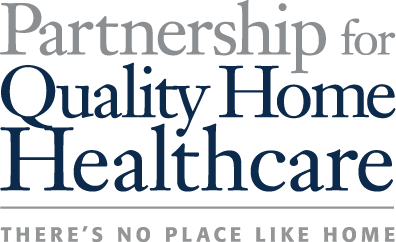June 28, 2021
CMS Proposed Rule Maintains 4.36% Assumption-Based Rate Cut to Medicare Home Health Despite Sector Concerns
Posted in: Press Release
Washington, D.C. –– The Partnership for Quality Home Healthcare (PQHH) – a coalition of home health leaders dedicated to developing innovative reforms to improve the program integrity, quality, and efficiency of home healthcare for our nation’s seniors – today expressed concern that the Centers for Medicare & Medicaid Services’ (CMS) Calendar Year (CY) 2022 Home Health Prospective Payment System (“HHPPS”) Proposed Rule continues to impose a flawed 4.36% payment cut on Medicare’s home health benefit. However, while home health leaders caution against extending these unsubstantiated cuts for the third consecutive year, into 2022, they commend CMS’ inclusion of the nationwide expansion of the Home Health Value-Based Purchasing (HHVBP) Model in today’s proposed rule.
Patient Driven Groupings Model (PDGM) Behavioral Rate Cuts
Despite concerns from lawmakers and providers – as well as a recent data analysis of 2020 Medicare claims data showing that assumptions used to justify the 2020 and 2021 cuts do not reflect actual provider behavior – CMS again proposed to maintain the 4.36% payment rate adjustment under the Patient Driven Groupings Model (PDGM) for another year. CMS did acknowledge, however, that home health stakeholders use different analytic methodologies for analyzing the impact of the behavioral adjustment cuts and states that the agency “intends to propose a methodology and, if appropriate, a temporary and permanent payment adjustment based on our analysis in future rulemaking.”
“Given Medicare’s own data about home health provider behavior, it is troubling that the agency continued the unjustified behavioral assumption cut for 2022. However, we remain encouraged that the agency states their intent to continue examining the data with the prospect of a future payment adjustment. We intend to continue working with the agency to ensure an adjustment is properly made, ” said Joanne Cunningham, Executive Director of the Partnership. “In order to ensure continued care delivery for Medicare beneficiaries, PQHH strongly urges CMS to eliminate the behavioral adjustment for home health payment rates for CY 2022 and reconcile any unsupported payment cuts for CYs 2020 and 2021,” added Cunningham.
The HHPPS proposed rule comes on the heels of a new analysis compiled by health economists at Dobson DaVanzo & Associates, which demonstrates, using a full set of 2020 Medicare claims data, how the assumptions CMS made when implementing the PDGM cut last year did not come to fruition, thus refuting the justification for the reimbursement reductions. Analyzing CMS’ own data, the researchers found that home health spending was 1.3% lower than projected ($16.6B in actual spending compared to an expected $16.9B) in 2020, the first year PDGM was in effect –– despite the tremendous financial strain the COVID-19 pandemic put on the home health provider sector.
Moreover, the health economics experts at Dobson DaVanzo & Associates found that low-utilization payment adjustment (LUPA) payments actually increased under PDGM and remained significantly higher than CMS originally projected, another justification for the home health cuts. While CMS assumed that home health providers would add additional visits in order to receive a full 30-day episode payment and avoid LUPA rates, home health agencies did not actually change their billing behavior to the highest paying diagnosis code and LUPA rates plateaued at 15.7% for 2020.
CMS’ data also show that Medicare home health spending fell significantly below the budget neutral level that Congress mandated for two consecutive years. According to the analysis, home health average case payments are still an estimated 3.2% below projected budget neutral levels ($1,747 estimated compared to $1,805), again undercutting the justification for the cuts.
Home Health Value-Based Purchasing (HHVBP) Model
The Partnership for Quality Home Healthcare commends the inclusion of the Home Health Value-Based Purchasing Model in the proposed HHPPS rule and intends to work collaboratively with CMS to ensure the program is implemented to strengthen quality of care and improve efficiencies across the Medicare Home Health benefit.
“We look forward to providing comment and working with CMS to make the new HHVBP model a success by building off lessons learned during the nine-state demonstration program,” added Cunningham. “PQHH supports incentivizing home health providers who demonstrate they are providing a high level of quality care to Medicare’s home health patients – who include some of our nation’s most at-risk seniors.”
# # #
